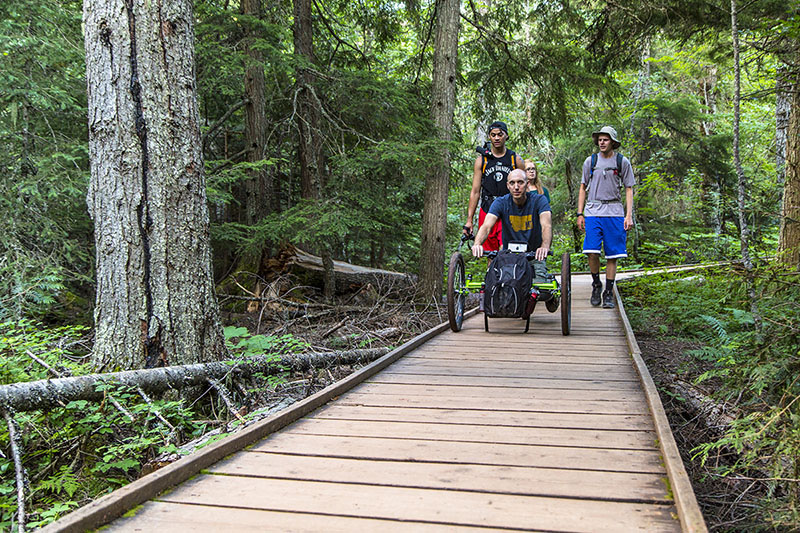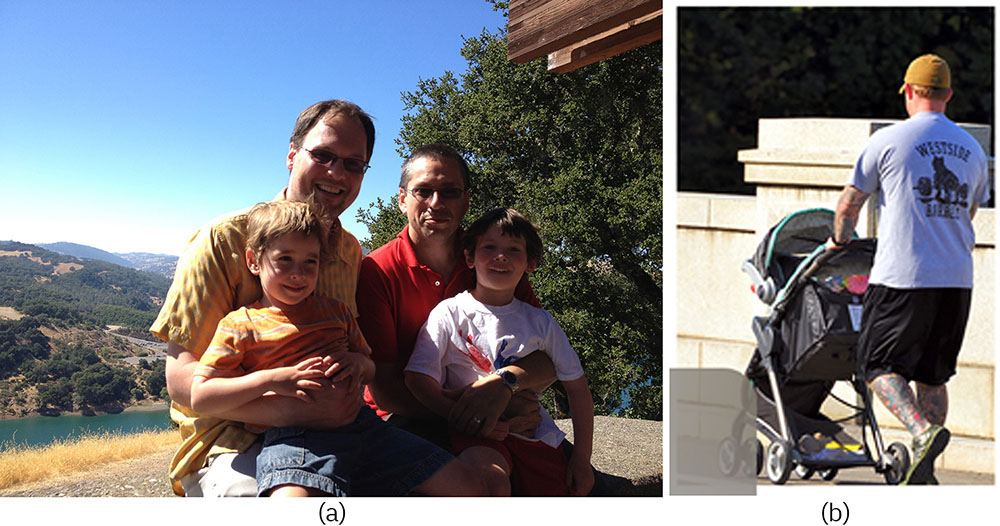1.1 What Is Sociology?
Learning Objectives
By the end of this section, you should be able to:
- Explain concepts central to sociology.
- Describe how different sociological perspectives have developed.
What Are Society and Culture?

Figure 1.2 Sociologists learn about society while studying one-to-one and group interactions. (Credit: GlacierNPS/Flickr)
Sociology is the scientific and systematic study of groups and group interactions, societies, and social interactions, from small and personal groups to very large groups. A group of people who live in a defined geographic area, who interact with one another, and who share a common culture is what sociologists call a society.
Sociologists study all aspects and levels of society. Sociologists working from the micro-level study small groups and individual interactions, while those using macro-level analysis look at trends among and between large groups and societies. For example, a micro-level study might look at the accepted rules of conversation in various groups such as among teenagers or business professionals. In contrast, a macro-level analysis might research the ways that language use has changed over time or in social media outlets.
The term culture refers to the group’s shared practices, values, and beliefs. Culture encompasses a group’s way of life, from routine, everyday interactions to the most important parts of group members’ lives. It includes everything produced by a society, including all the social rules.
Sociologists often study culture using the sociological imagination, which pioneer sociologist C. Wright Mills described as an awareness of the relationship between a person’s behavior and experience and the wider culture that shaped the person’s choices and perceptions. It’s a way of seeing our own and other people’s behavior in relationship to history and social structure (1959). One illustration of this is a person’s decision to marry. In the United States, this choice is heavily influenced by individual feelings. However, the social acceptability of marriage relative to the person’s circumstances also plays a part.
Remember, though, that culture is a product of the people in a society. Sociologists take care not to treat the concept of “culture” as though it were alive and real. The error of treating an abstract concept as though it has a real, material existence is known as reification (Sahn, 2013).
Studying Patterns: How Sociologists View Society
All sociologists are interested in the experiences of individuals and how those experiences are, on a micro-level, shaped by interactions with social groups and, on a more macro-level, the systems and structures that constitute society. To a sociologist, the personal decisions an individual makes do not exist in a vacuum. Cultural patterns, social forces, and influences put pressure on people to select one choice over another. Sociologists try to identify these general patterns by examining the behavior and experiences of large groups of people living in the same society.
Consider the changes in U.S. families. The “typical” (or normative, as we say in sociology) family in past decades consisted of straight and married parents living in a home with their unmarried children. Today, the percentage of unmarried couples, same-sex couples, single-parent and single-adult households is increasing, as well as the number of expanded households, in which extended family members such as grandparents, cousins, or adult children live together in the family home. While 15 million mothers still make up the majority of single parents, 3.5 million fathers are also raising their children alone (U.S. Census Bureau, 2020). Increasingly, single people and cohabitating couples are choosing to raise children outside of marriage, including having children through surrogates or adoption.

Figure 1.3 Modern U.S. families may be very different in makeup from what was historically typical. (Credit A: Paul Brody/flickr; B: Tony Alter/Wikimedia Commons)
To understand these changes in the family, some sociologists study social facts—the laws, morals, cultural rules, norms, values, beliefs, customs, fashions, and rituals that govern social life. Do people in the United States view marriage and family differently over the years? Do they view them differently than other countries? Do employment and economic conditions play a role in families? Other sociologists study the impacts of these new patterns, such as the ways children influence and are influenced by them and/or the changing needs for education, housing, and healthcare.
Sociologists identify and study patterns related to all kinds of contemporary social problems. The “Stop and Frisk” policy, the emergence of new political factions, and how social media influences everyday communication, are all examples of topics that sociologists might explore.
Studying Part and Whole: How Sociologists View Social Structures
A key component of the sociological perspective is the idea that the individual and society are inseparable. It is impossible to study one without the other. German sociologist Norbert Elias called the process of simultaneously analyzing the behavior of individuals and the society that shapes that behavior figuration.
Consider religion. While people experience religion in a distinctly individual manner, religion exists in a larger social context as a social institution. For instance, an individual’s religious practice may be influenced by what government dictates, holidays, teachers, places of worship, rituals, and so on. These influences underscore the important relationship between individual practices of religion and social pressures that influence that religious experience (Elias, 1978). In simpler terms, figuration means that as one analyzes the social institutions in a society, the individuals engaging with and in institutions in any fashion need to be ‘figured’ into the analysis.
Sociology in the Real World: Individual-Society Connections
When sociologist Nathan Kierns spoke to his friend Ashley (a pseudonym) about the move she and her partner made from an urban center to a small Midwestern town, he was curious about how the social pressures placed on a lesbian couple differed from one community to the other. Ashley said that in the city they were accustomed to getting looks and hearing comments when she and her partner walked hand in hand. Otherwise, she felt that they were at least tolerated. There had been little to no outright discrimination.
Things changed when they moved to a small town for her partner’s job. For the first time, Ashley found herself experiencing direct discrimination because of her sexuality. Some of it was particularly hurtful. Landlords would not rent to them. Ashley, who is a highly-educated professional, had a great deal of difficulty finding a new job.
When Nathan asked Ashley if she and her partner became discouraged or bitter about this new situation, Ashley said that rather than letting it get to them, they decided to do something about it. Ashley approached groups at a local college and several churches in the area. Together they decided to form the town’s first Gay-Straight Alliance.
The alliance worked successfully to educate their community about same-sex relationships. It also worked to raise awareness about the kinds of discrimination that Ashley and her partner experienced in the town and how those could be eliminated. The alliance became a strong advocacy group, and it is working to attain equal rights for lesbian, gay, bisexual, transgender, and queer (LGBTQ) individuals.
Kierns observed that this is an excellent example of how negative social forces can result in positive responses from individuals to bring about social change (Kierns, 2011).

